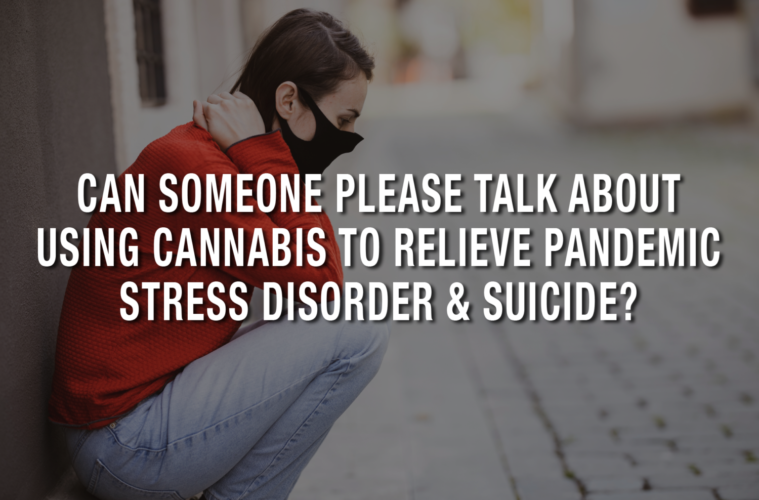The most stunning moments in my years of involvement in the marijuana legalization movement were when someone told me, “I haven’t tried to kill myself since I started using marijuana.”
I am not a doctor, a psychologist, or even a counselor, so I was really unprepared for that. I have had cancer patients tell me that if they had not had a few tokes of marijuana to help them with the extreme nausea from chemotherapy, they would have chosen to die from the cancer rather than endure the hellish side effects from the chemo. The pharmaceutical antiemetics had stopped working. Even in 1991, “More than 44% of the respondents report recommending the (illegal) use of marijuana for the control of emesis to at least one cancer chemotherapy patient. Almost one-half (48%) would prescribe marijuana to some of their patients if it were legal. As a group, respondents considered smoked marijuana to be somewhat more effective than the legally available oral synthetic dronabinol ([THC] Marinol).”
See: Marijuana as antiemetic medicine: A survey of oncologists’ experiences and attitudes
And I have known patients who did kill themselves rather than go to prison and be tortured to death by a regime that would watch them die in pain rather than allow them to use that plant.
But now … it’s a bigger picture.
According to a Centers for Disease Control and Prevention survey of more than 5,400 people, almost 11% of adults in the United States reported seriously contemplating suicide in June. That is almost double the percentage who reported that last summer.
Now Psychology Today is reporting that “America Is Facing a Teen Suicide Pandemic.”
“In the United States, suicide is the 10th leading cause of death — with more than 2,000 14- to 18-year-olds dying every year by suicide, and accounting for about one of every three injury-related deaths.”
New CDC data reveal that the numbers of students who have considered attempting suicide are even higher for students identifying as female, Black, or non-heterosexual. In addition, about one in six students have made a suicide plan and slightly more than one in 10 have attempted suicide.
Over the past 20 years, teen suicide rates have skyrocketed by over 60 percent, with almost every suicide indicator and student population showing increasing trends.
The study found that the groups with the highest rates of suicide ideation were unpaid caregivers for adults, citing 30% who contemplated it in June.
The other group highly affected was the 18-to-24 age group with 25% reported seriously thinking about suicide in June.
Besides an increase in suicide ideation, the study found that there was also an increase in symptoms of depression and anxiety. The rate of depression symptoms quadrupled in number and anxiety tripled compared to the second quarter of 2019.
About 13% of those surveyed said they increased or started using substances to cope with stress during June. “Substances??”
See: CBD Edibles Vs. THC Edibles: Is There Any Difference?
Let me emphasize that I am not saying that cannabis is the solution to the surge in suicides in the pandemic, but outlawing or even just ignoring it, is certainly counterproductive.
What other “substances” might they use?
Alcohol kills an estimated 88,005 people (approximately 62,000 men and 26,000 women) making alcohol the third leading preventable cause of death in the United States.
More than 67,300 Americans died from drug-involved overdose in 2018, including illicit drugs and prescription opioids.
According to data from the National Institute on Drug Abuse, overdose deaths involving benzodiazepines (Valium, Xanax etc) increased from 1,135 in 1999, to 8,791 in 2015.
Between 1996 and 2013, the number of benzodiazepines prescribed for adults increased by 67% to 135 million prescriptions per year, and the quantity prescribed per patient more than tripled during that period.
See: Can CBD Help With Asthma?
According to Yale Medical School, “Among teenagers, rates of addiction to benzodiazepines have already overtaken rates of opioid addiction.”
Of course, the overdose rate for cannabis is still zero, but the arrest rate is still over 550,000 Americans per year.
Feeling suicidal?
Richard Cowan is a former NORML National Director and author of Can CBD Help with Arthritis? and the Marijuana Weekly News syndicated column.
Advertising disclosure: We may receive compensation for some of the links in our stories. Thank you for supporting LA Weekly and our advertisers.

